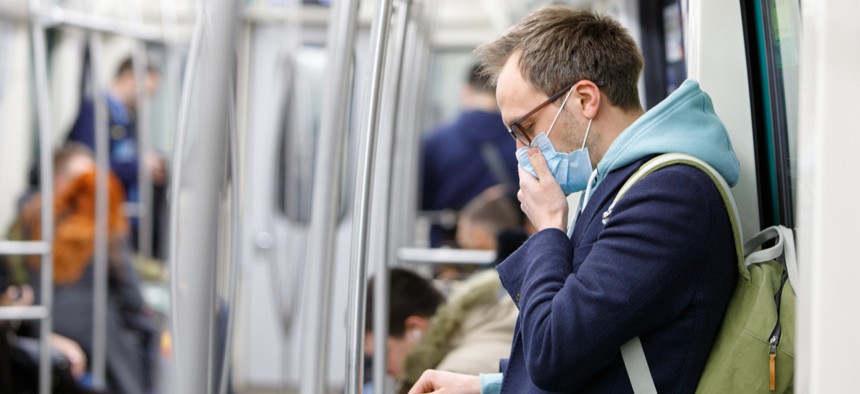NIH Explores New Digital Health Solutions to Trace and Fight COVID-19

DimaBerlin/Shutterstock.com
Two of the agency’s institutes seek new technical tools and data to inform re-entry risks.
The National Institutes of Health aims to identify, potentially develop and then eventually connect a range of digital health solutions to help America assess re-entry risks and other COVID-19 pandemic-driven decisions.
According to a request for information published Tuesday, the National Institute of Biomedical Imaging and Bioengineering and the National Cancer Institute are looking to leverage new technical tools against the novel coronavirus—and they would like to incorporate the de-identified data and other digital assets those solutions generate into an NIH-supported central data hub for researchers.
“In the midst of the COVID-19 pandemic, there is an urgent need to protect individuals from coronavirus exposure while allowing society to return to normal function as quickly as possible. At present, we have only the blunt tools of social distancing and quarantine to contain the epidemic,” officials wrote in the RFI. “Novel digital health solutions have the potential to improve care, understanding of health outcomes, and risk factors related to the COVID-19 pandemic.”
The health-focused solutions the institutes seek must encompass many data sources, mechanisms that securely protect people’s privacy, and algorithmic or computational tools to promote population health management during and beyond the current global health crisis. The institutes note that this sort of management might include “assessing the readiness of individuals to return to work, calculating the risk of possible SARS-CoV-2 infection, identifying and tracing contacts of COVID-19 cases, monitoring the health status of infected individuals, or linking individuals to clinical trials of therapies or preventative interventions for COVID-19.”
Insiders also plan to place a specific, deliberate focus on communities with limited access to health care services and resources. And between the spokes of that hub, interoperability standards will allow for the “unambiguous linking” of the digital resources.
“This will enable researchers, for example, to apply a risk classification algorithm developed in one spoke to individuals’ health data that was collected by other spokes,” officials wrote. They also clarified that “the purpose of this notice is to obtain information for the ‘spokes of the hub’; not the hub itself.”
The institutes indicate the technological solutions they’re keen to find could include smartphone applications and commercial wearable technologies, computational modeling algorithms, or novel approaches to data analysis and aggregation. They also lay out a list of 10 specific capabilities, such as tracing user contact with people who were diagnosed with or suspected of having the novel coronavirus; assessing the likelihood of a user having undiagnosed COVID-19; ascertaining patterns of movement that influence exposure, spread, and containment of the sickness; uncovering insights that individuals, employers, government agencies, and others can use to evaluate risk of allowing people to return to prior-pandemic working conditions, travel, and recreational activities; and others. Officials go on to lay out a range of other expectations participants and their technological tools would also need to meet, such as plans to preserve user privacy and means for data transmission.
Interested entities are invited to submit capability statements by June 5, and the institutes will also host a virtual meeting for industry engagement May 29.



